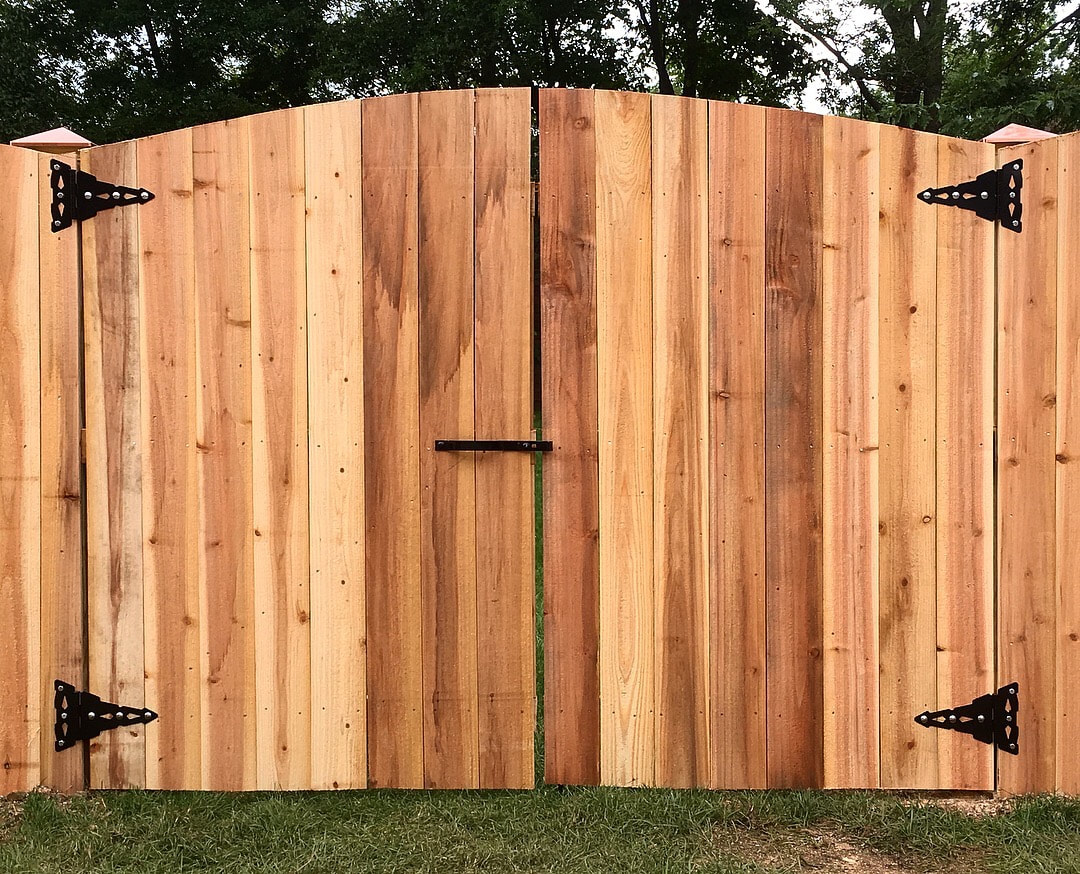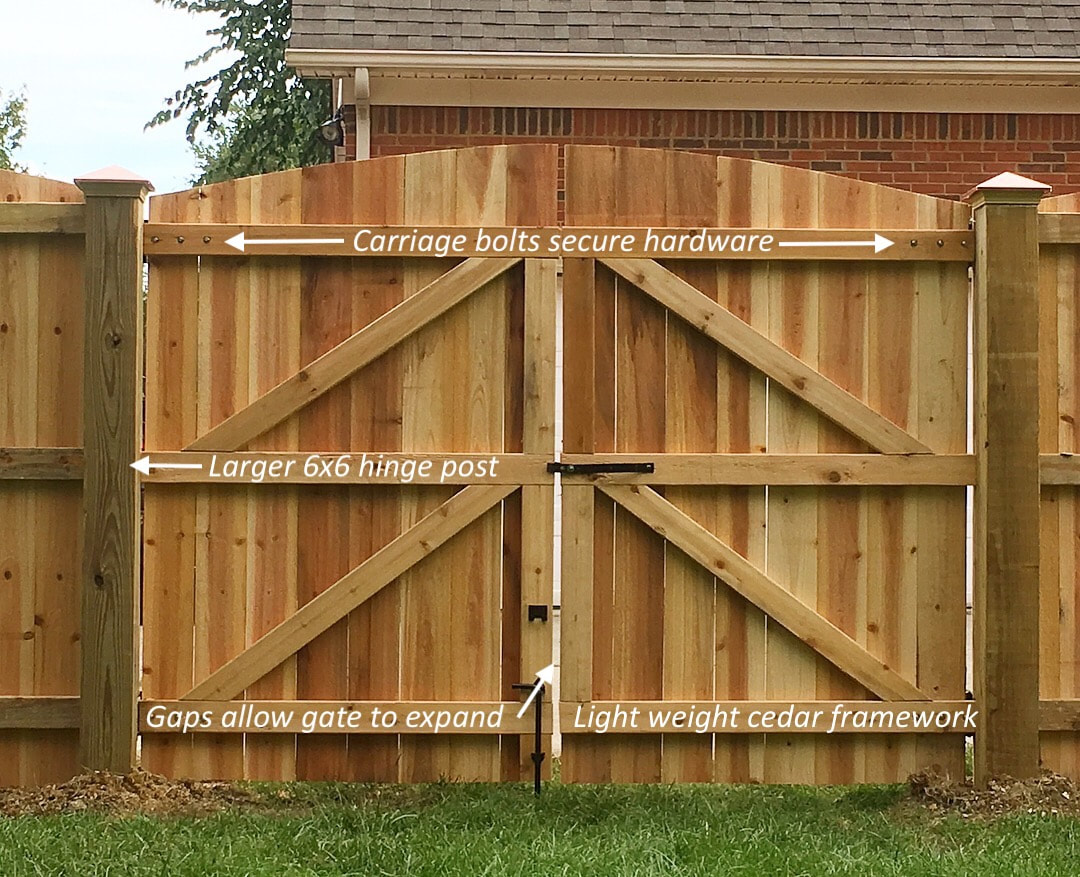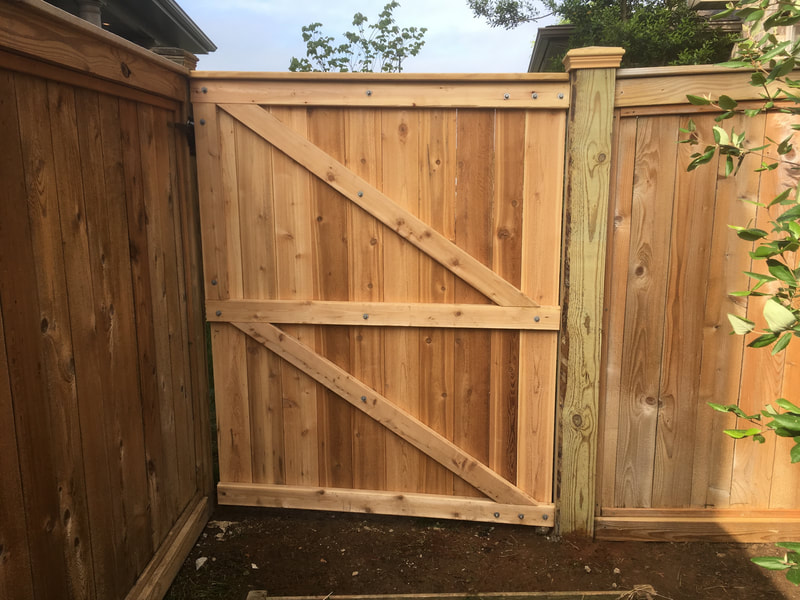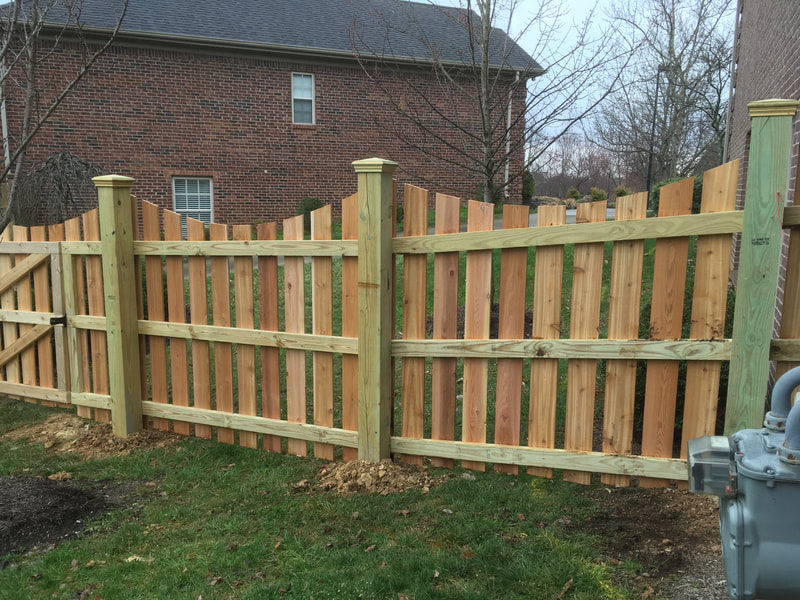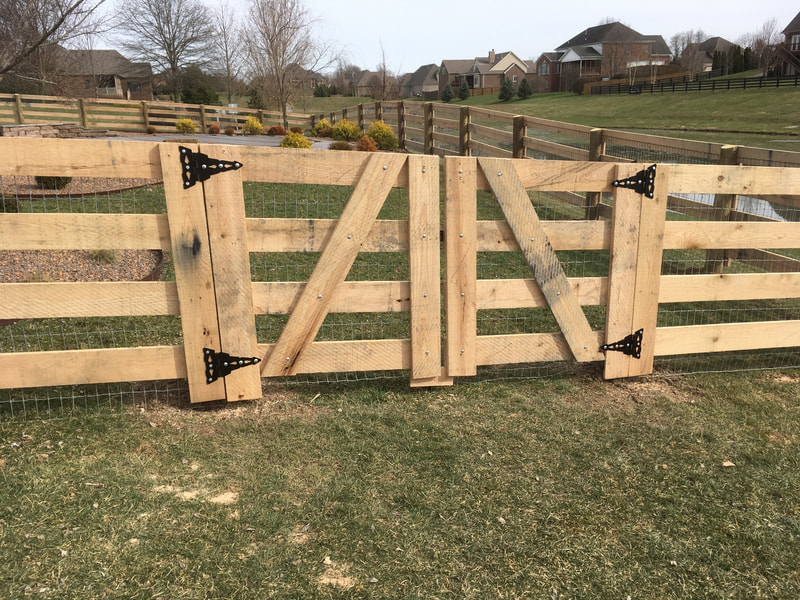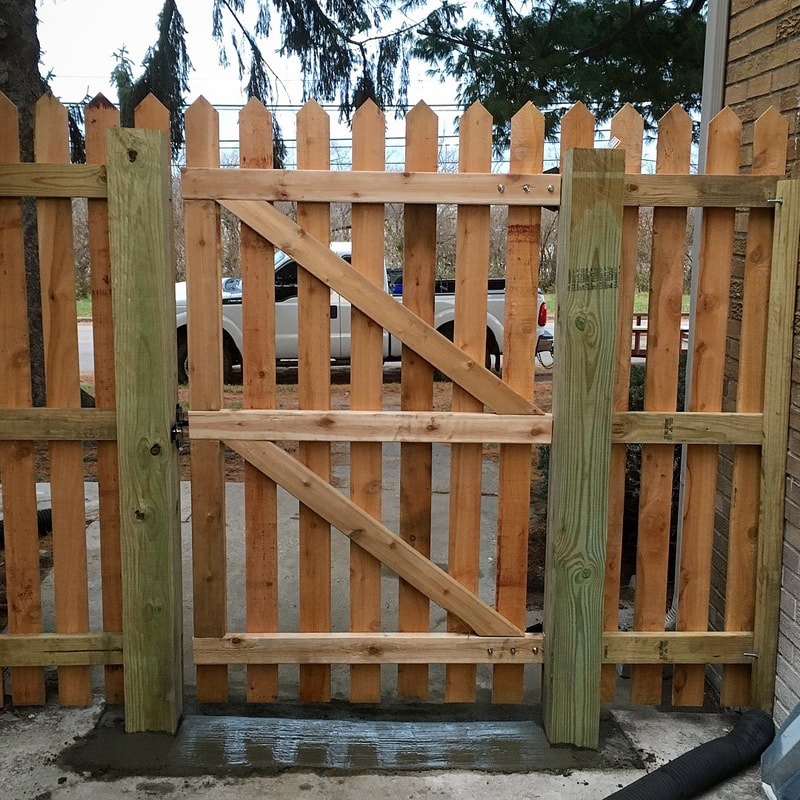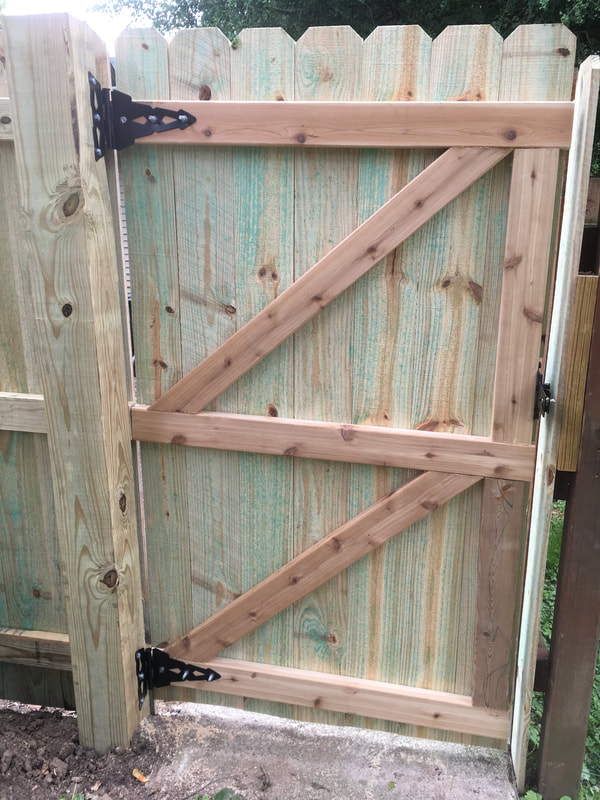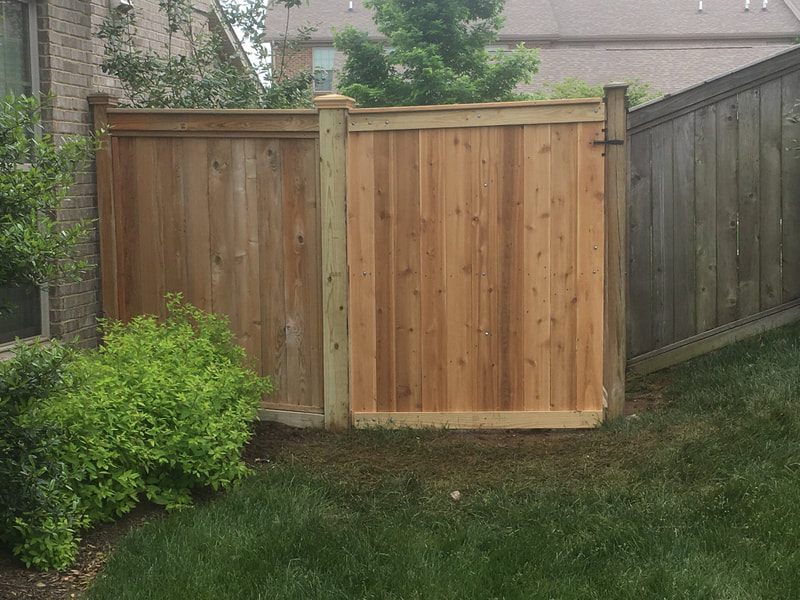Gates
|
One of the most common calls we get involve issues with a gate. No other part of the fence receives the amount of daily use and interaction than the gate. While a fence can slowly lean for years without notice, the moment a gate starts to have problems can create problems and headaches for the homeowner.
For these reasons, we go above and beyond to do everything possible to intentionally build a gate that is designed to give years of headache free use. Keep reading to learn about common failures and how we work around these issues to build a durable gate. |
|
Gates are generally quite heavy and experience frequent use. This weight, movement and lack of support that surrounding fence has makes gates more prone to sagging. To work around this issue, we like to use larger post than the surrounding fence. The larger 6x6 treated pine post set in concrete create a solid structure for the gate to hinge upon, last longer and resist sagging and warping.
Gates are also commonly built from treated pine framework like the rest of the fence. We have found that cedar is significantly lighter, just as strong and less likely to warp, bow or crack. We take the time to carefully cut the cross braces to help direct the load of the gate onto the hinges. Common gate hardware is built to handle the stress and load of the gate but have a weakness with the included screws used to attach the hinges. The included screws are just long enough to reach the 2x4 behind the picket. Often, after a couple of years, the wood expands and contracts and works these screws loose, resulting in a wobbly gate. To help work around this common problem, we use lag bolts to secure the hinge onto the gate and 4" lag screws to attach the hinge to the post. The lag bolts have a nut and washer on the back side of the gate that create a very strong and positive connection that can be adjusted later if needed. The 4" lag screws anchor the hinge deeply into the 6x6 post and not just the picket/2x4 on the outside of the fence. Other areas of detail we take a focus on is the direction that the gate swings with surrounding terrain and building gaps into critical areas of the gate operation that allows the gate to expand and contract with the seasons. Without these gaps along the outside edges and along the bottom, the gate is bound to drag and catch after just a couple of months of use. We do everything possible to create a robust and strong gate that will provide smooth and hassle free operation for the long haul. If you are interested in having a gate built or replacing your gate, we hope that you contact us today! |
